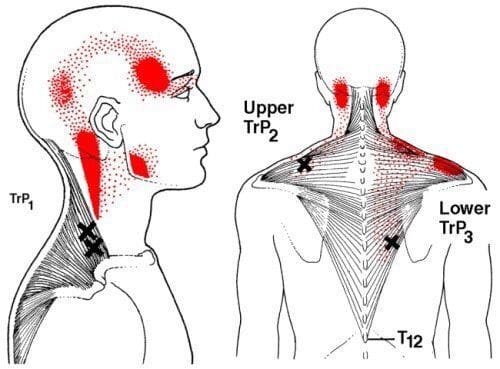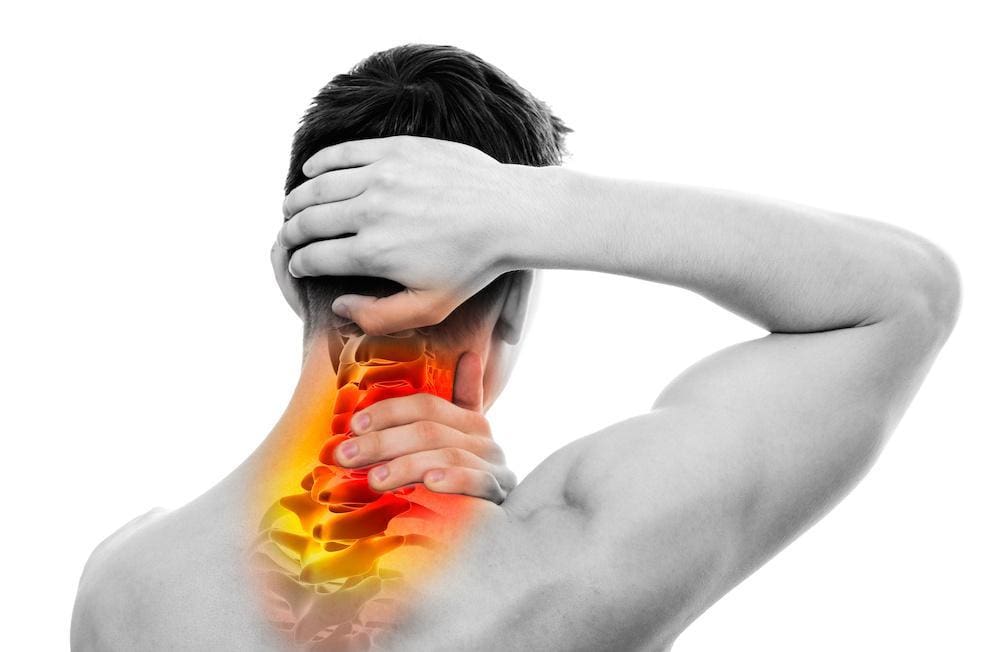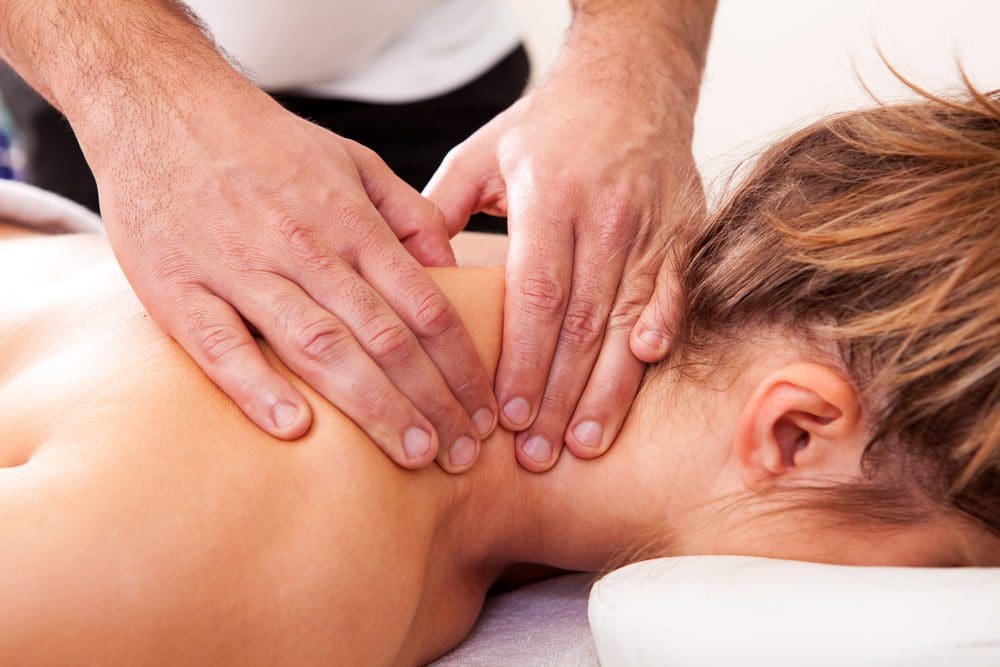Table of Contents
Introduction
The cervical spine has a casual relationship with the central nervous system as the brain and spinal cord works together to send neuron signals through the nerve pathways spread throughout the entire body. The cervical spine is part of the neck, where ligaments and muscles encompass the cervical joints to stabilize the head, neck, and shoulders. The neck has various muscles that support the head and can succumb to various injuries that can cause muscle strain and other associated symptoms that can affect the upper extremities of the body. Today’s article looks at the posterior cervical muscles, how trigger points affect the posterior cervical muscles, and how non-invasive treatments can help manage myofascial cervical pain. We refer patients to certified providers who specialize in musculoskeletal treatments to aid individuals suffering from myofascial trigger pain associated with the neck affecting the posterior cervical muscles. We also guide our patients by referring them to our associated medical providers based on their examination when appropriate. We ensure to find that education is the solution to asking our providers insightful questions. Dr. Jimenez DC observes this information as an educational service only. Disclaimer
What Are The Posterior Cervical Muscles?

Have you been experiencing random headaches that affect your day? Do you feel any tension in your neck? Or do you experience stiffness and limited mobility when turning your neck? Most of these symptoms are associated with trigger pain affecting the posterior cervical muscle on the neck. The posterior cervical muscles function in the neck’s anatomic region while protecting the cervical spine. The muscles in the cervical spine form a triangle on the neck while providing functionality and movement to the neck, the head, shoulder, and upper back. Some of the muscles that work together with the cervical spine include:
- Levator scapulae
- SCM (Sternocleidomastiod)
- Trapezius
- Erector spinae
- Deep cervical flexors
- Suboccipitals
- Semispinalis
- Splenius
These muscles and soft tissues provide stability to the neck and work together with the tendons and ligaments to rotate, extend, and retract the head, neck, shoulders, and upper back. To that point, if the neck muscles become strained, it can lead to various issues that can cause pain to the neck and cervical spine.
How Trigger Points Affect The Posterior Cervical Muscles

Studies reveal that a musculoskeletal disorder known as cervical myofascial pain causes the surrounding muscles in the neck and shoulder regions to become tender to the touch and evoke pain in different areas of the body. When the posterior cervical muscle has become strained from various issues like poor posture, over-exercising, getting involved in an auto accident, or have suffered from a degenerative condition, it can cause the muscles to be overused, hypersensitive, and stiff while potentially being at risk of developing trigger points along the neck and shoulder muscles. Trigger points are a bit problematic as they are associated with referred pain and can be either latent or active as they create tiny nodules along the taut muscle fibers in the area. Research studies reveal that referred pain from cervical myofascial pain can be elicited by active trigger points on the affected muscle. To that point, the active trigger points can mimic other pain symptoms along the upper extremities, making diagnosing myofascial pain challenging. Thankfully there are ways to manage trigger point pain associated with the posterior cervical muscles along the neck and cervical spine.
Exercises For Neck & Shoulder Pain-Video
Have you been experiencing stiffness along the sides of your neck or on your shoulders? Do headaches make it impossible to get through an entire day? Or have you been feeling tightness along your jawline? Many people with neck pain and its associated symptoms could risk developing myofascial trigger pain along the posterior cervical muscles. Having myofascial trigger pain associated with the posterior cervical muscle and affecting the neck and upper extremities can cause many people to be miserable; however, there are many ways that people can utilize to relieve the pain along the posterior cervical muscles and manage myofascial cervical pain associated with the neck. The video above provides various neck and shoulder pain exercises correlating with myofascial trigger points. To that point, finding non-invasive available treatments to manage myofascial cervical pain can help reduce the effects of pain along the neck and posterior cervical muscles.
Non-Invasive Treatments To Manage Myofascial Cervical Pain
Many people suffer from neck pain associated with myofascial cervical pain; many factors can contribute to developing tiny nodules along the posterior muscles. Studies reveal that activities, whether work-related or for entertainment, can yield repetitive stress on the muscle groups that cause chronic tension in the muscle fibers to form trigger points. To that point, myofascial trigger pain causes the taut muscle bands to be hyper-sensitive and affect the muscle area. Many people suffering from myofascial trigger pain can utilize non-invasive treatments to manage myofascial pain associated with the posterior cervical muscle. Some of the treatments that help manage myofascial cervical pain include:
- Acupuncture
- Trigger point release therapy
- Chiropractic care
- Heat therapy
- Exercise/stretching
Many of these treatments help release the trigger points from the affected muscles and help prevent them from re-occurring on the affected muscles along the upper extremities.
Conclusion
The neck has many muscles, ligaments, and tissues that help support the upper extremities of the body. When issues begin to affect the functionality of the neck muscles, it can lead to the development of myofascial trigger pain in the posterior cervical muscles along the neck to cause painful symptoms. This can lead to overlapping chronic issues like stiffness and tenderness in the upper extremities. Non-invasive treatments can help alleviate the pain and manage the symptoms caused by myofascial cervical pain in the upper extremities of the body. This allows the affected muscle to return to its functionality and prevents future issues from affecting the body.
References
Alghadir, Ahmad H, et al. “Efficacy of Combination Therapies on Neck Pain and Muscle Tenderness in Male Patients with Upper Trapezius Active Myofascial Trigger Points.” BioMed Research International, Hindawi, 10 Mar. 2020, www.ncbi.nlm.nih.gov/pmc/articles/PMC7085833/.
Fernández-de-Las-Peñas, César, et al. “The Role of Myofascial Trigger Points in Musculoskeletal Pain Syndromes of the Head and Neck.” Current Pain and Headache Reports, U.S. National Library of Medicine, Oct. 2007, pubmed.ncbi.nlm.nih.gov/17894927/.
Stathakios, James, and Michael A Carron. “Anatomy, Head and Neck, Posterior Cervical Region.” In: StatPearls [Internet]. Treasure Island (FL), StatPearls Publishing, 27 July 2021, www.ncbi.nlm.nih.gov/books/NBK551521/.
Touma, Jeffrey, et al. “Cervical Myofascial Pain.” In: StatPearls [Internet]. Treasure Island (FL), StatPearls Publishing, 4 July 2022, www.ncbi.nlm.nih.gov/books/NBK507825/.
Disclaimer
Post Disclaimer
Professional Scope of Practice *
The information herein on "Trigger Points Affect Posterior Cervical Muscles" is not intended to replace a one-on-one relationship with a qualified health care professional or licensed physician and is not medical advice. We encourage you to make healthcare decisions based on your research and partnership with a qualified healthcare professional.
Blog Information & Scope Discussions
Welcome to El Paso's Wellness blog, where Dr. Alex Jimenez, DC, FNP-C, a board-certified Family Practice Nurse Practitioner (FNP-C) and Chiropractor (DC), presents insights on how our team is dedicated to holistic healing and personalized care. Our practice aligns with evidence-based treatment protocols inspired by integrative medicine principles, similar to those found on dralexjimenez.com, focusing on restoring health naturally for patients of all ages.
Our areas of chiropractic practice include Wellness & Nutrition, Chronic Pain, Personal Injury, Auto Accident Care, Work Injuries, Back Injury, Low Back Pain, Neck Pain, Migraine Headaches, Sports Injuries, Severe Sciatica, Scoliosis, Complex Herniated Discs, Fibromyalgia, Chronic Pain, Complex Injuries, Stress Management, Functional Medicine Treatments, and in-scope care protocols.
Our information scope is limited to chiropractic, musculoskeletal, physical medicine, wellness, contributing etiological viscerosomatic disturbances within clinical presentations, associated somato-visceral reflex clinical dynamics, subluxation complexes, sensitive health issues, and functional medicine articles, topics, and discussions.
We provide and present clinical collaboration with specialists from various disciplines. Each specialist is governed by their professional scope of practice and their jurisdiction of licensure. We use functional health & wellness protocols to treat and support care for the injuries or disorders of the musculoskeletal system.
Our videos, posts, topics, subjects, and insights cover clinical matters, issues, and topics that relate to and directly or indirectly support our clinical scope of practice.*
Our office has reasonably attempted to provide supportive citations and has identified the relevant research studies or studies supporting our posts. We provide copies of supporting research studies available to regulatory boards and the public upon request.
We understand that we cover matters that require an additional explanation of how they may assist in a particular care plan or treatment protocol; therefore, to discuss the subject matter above further, please feel free to ask Dr. Alex Jimenez, DC, APRN, FNP-BC, or contact us at 915-850-0900.
We are here to help you and your family.
Blessings
Dr. Alex Jimenez DC, MSACP, APRN, FNP-BC*, CCST, IFMCP, CFMP, ATN
email: coach@elpasofunctionalmedicine.com
Licensed as a Doctor of Chiropractic (DC) in Texas & New Mexico*
Texas DC License # TX5807
New Mexico DC License # NM-DC2182
Licensed as a Registered Nurse (RN*) in Texas & Multistate
Texas RN License # 1191402
ANCC FNP-BC: Board Certified Nurse Practitioner*
Compact Status: Multi-State License: Authorized to Practice in 40 States*
Graduate with Honors: ICHS: MSN-FNP (Family Nurse Practitioner Program)
Degree Granted. Master's in Family Practice MSN Diploma (Cum Laude)
Dr. Alex Jimenez, DC, APRN, FNP-BC*, CFMP, IFMCP, ATN, CCST
My Digital Business Card



